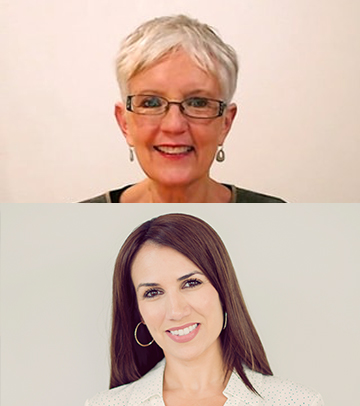The Neurobiology of Compassion
 |
with Paul Gilbert, PhD;
|
 |
with Paul Gilbert, PhD; Kristin Neff, PhD; Jack Kornfield, PhD; Kelly McGonigal, PhD; Christopher Germer, PhD; Dennis Tirch, PhD; Emiliana Simon-Thomas, PhD; Ruth Buczynski, PhD and Ashley Vigil-Otero, PsyD
Sign up for a Gold Membership

I am so grateful for the generosity of everyone in sharing such powerful tools that I have already used immediately in my sessions! I am taking away so many insights and A- ha moments. I love the story of the zebra in helping clients understand the old brain and new brain. The Self Compassion Break tool I would like to use for a client who is struggling with anxiety as a result of strong medication side effects that is causing hair fall. This client is dealing with Lupus and is feeling extremely isolated in her suffering. The Common Humanity is a concept I would like to share with her to help her see that the existence of her suffering is there with at least one other human being. Thank you.
Great information and well presented! I have already used the heart breath for calm myself and look forward to using it with others. I would like to find out more about the UCSF research with Wang(?) and ?. Could you let me know how to find it? Thanks for your generosity in sharing this series.
I have employed the concept of the Amygdala many times and had many a light bulb moments with my clients. Now I am delighted to have the Insula, Vagus nerve and Temporal Parietal Junction to weave into my psycho-education of the client, producing an even richer mix to show how negative past experience and positive practice of self compassion can impact on our neurobiology. Particularly helpful for a current client who has used addiction and health anxiety to cope with and mask a deep past trauma. Jack Kornfield said, with the practice of compassion we can learn to ‘expand our window of tolerance.’ Due to long term PTSD my client presents as uber vigilant and finds it very difficult to live with uncertainty, so this was a very helpful prompt to include more use of self compassion in session. I loved the use of linguistics to illustrate the connection between courage (the centre of compassion) and the heart (‘coeur’) and the description of compassion as being not only nurturing and warm but fierce, protective, active, a ‘caring force.’ The three circles system was helpful (especially asking how big they are for each client). And dropping the focus out of the mind and into the body with heart breathing followed up with soften, soothe, allow could prove to be a very powerful intervention for this client as he tends to dwell headward. Finally that the brain is designed to reinforce kindness and benevolent behaviours by the use of rewards. That really took my breath away. Thank you.
I was so pleased to be able to immediately use the heart breathing technique and guided meditation (locating where in the body, touching or sending loving kindness, speaking directly to the suffering parts as we would to other loved ones), during a grief counselling session with 5 grade 5 students.Kid-friendly techniques. They found them easy to follow, effective, and made easier to talk about their feelings. Most importantly, they reported that they “felt better right away” and “less freaked out”. I was overjoyed that these techniques will now readily available to them to help them self-soothe between our meetings. Thanks for all the good information presented.
Self compassion may be an abstract concept. In mindfulness, I reach to the part that is aching and give it an age or a name. Then I reach out to that part and listen to her suffering. I make sur she knows that I am here for her, that I won’t let her down, that I love her. I am patient. She will not get in my arms immediately. usually I have a little live animal in my arms. She will approach. And I let her be. I make sure she knows that for me she exists. I listen to her movements. Sometimes she will sit besides me. And I take my time.
love this approach – so easy to relate to!
QUESTION: Not only am I interested in sharing this research on The Neurobiology of Compassion with other practitioners, how do I get my state (California) to adopt this concept and include it in all sectors of the community and across all life spans?
In addition to the following Departments: Mental Health, Health, Public Health, Social Services, I can see this concept beneficial in all types of schools and programs: Child Care, Head Start, Preschool, K-12, Public, Private, Clergy, Universities, Community Colleges, Alternative Schools, Justice Involved, Vocational Training, Specialized Trainings, After-School Programs, Sports Programs, Senior Centers, Teen Parenting, Domestic Violence, YWCA, YMCA, DOR, etc.
I think this understanding of compassion is a key component of a client’s attachment to her father, in that she felt enormous pain seeing him suffer. The release of the reward,pleasure, and caretaking/bonding hormones when you move toward someone to help them, could make a child seek that even more, even when her father is molesting her. She has been so rejecting of her own compassion, and we think it’s because her compassion toward her father made it very easy for him to abuse her. She believes it was her compassion that led her into danger and wants nothing to do with it now. Seeing the Threat Circle will be helpful for her. Thank you.
WOW!!!? Much Thanks!!! You all made this subject easy to follow along and understand. Now, it makes sense to me why my former clinician was trying to convey the importance of calming the parasympathetic system. She even prescribed deep breathing as a form of treatment to help me take time for self-care. But of course, when time with one’s clinician is limited to only 15-minutes and visits are scheduled on a quarterly basis (due to a high population demand) how much information can reasonably be expected to be absorbed during one’s visit?
On another note, I wished I had written down the connection between compassion, shame, resistance and making space for the ill feelings. I loved how it was stated. I need to repeat it so I can make sense of these concepts. I mean it’s a paradigm shift that requires time. I had an “Aha” moment.?
It was great to hear the case examples of how the three circles can help to increase client’s mind awareness. I will use this as a stepping stone to introduce compassion based practices to activate the soothing system.
I love the Soften Soothe Allow exercise from the MSC course. It has helped me through many difficult emotions. I have used this in my clinical work similar to how Chris described it, and clients always walk away feeling more content.
Oh!yeah, that! liberation from pressure to immediately find words or to try to out-think all aspects of a “problem”. Let’s drop down in to a bodily awareness. Trust inner witness that it is safe and healthy to do so.
I am interested in becoming a mediator for community, maybe even court of law. I want to bring as much emotional intelligence to the meeting as possible in a rational, results-driven context.
Aha why do some of us humans actually resist soft/ soothe/ allow?
What is this insecure attachment phenomenon? Thanks for getting me asking!
1.Heart Breathing–Imagining the heart having nostrils, imagining the heart breathing in and out, to drop awareness from head to body.
2. Soften the body. Soothe the emotion (What would you say to a friend?). Allow the emotion(Give yourself space to be a human and have the full range of emotions)
3. —That we learn self-soothing by **first receiving it**. For my clients that were rejected by their families of origin, I may be the person that first gives them soothing, for them to learn how to give soothing to themselves. They can’t jump from never having been soothed, to being able to independently soothe themselves.
All that you shared gives me hope for a brighter future but #3 is a home run and you hit it out of the park! It brings to mind now how to break the chain of generational and historical trauma. Well, I’m a practitioner on the opposite side as a consumer learning new practices to improve and enhance my well being.
By equipping myself with new tools allows me to share with my peers in the form of Peer Support which is rooted in the Social Recovery Model. The idea is that by helping others heal is helping myself simultaneously.
An example is when I share my story of lived experience. I’m an example that Recovery is possible. Moreover, understanding that “Recovery is a process and Not a Destination” (1) alleviates one from the burden of perfection while empowering one to appreciate one’s own journey. Recovery looks different for others but it is possible and that always conveys HOPE.
1. Author Unknown but widely accepted and often promoted in various media formats in Mental Health
I liked the 3 circle of emotional regulation as a visual tool to use with my clients. Appreciated also the neurobiology of compasion
It was wonderful to see Christopher Germer and Kristin Neff again. Their curriculum in Mindful Self-Compassion has changed my life and many client’s lives. I also enjoyed Emiliana Simon-Thomas’ neurobiological descriptions of compassion and will incorporate this with polyvagal theory. Thank you.
Today’s session has taught me how to simply teach a client how to allow emotions to soften in the body. Through regular practice, I believe this will empower the client to become more resilent in times of difficulties.
Thanks guys. The 3 circle model is intuitive and immediately useful. A wonderful person centre therapeutic approach grounded in sound neuropsychological evidence. Love it.
Wow! Another amazing presentation. All the ingredients that have worked in my own recovery from C-PTSD, and presented in such a way that is so easy to understand. I look forward to getting this series and utilizing it in my upcoming practice as a new clinician. I’m currently a graduate student changing careers mid-life in order to give back what I’ve received from my own healing. This is exactly what I need to help myself apply what I have learned from my own therapy.
I appreciated Dr. McGonigal’s “Heart Breathing” technique to take awareness of self from the head to the heart and open myself and my clients up to a more calm and compassionate vagal state.
I really liked the introduction to using the 3 circles (systems) in therapy. I run a PTSD group and want to use this with them. Can you provide a slide with the 3 circles?
Great to have revisited the three circles and connect it up with soften/soothe/allow. Thank you so much.
Self-compassion is a change process
Two things I realized: it provides a frame for understanding what the clients are dealing with and what is happening with their bodies—absorbing how to shift is another matter AND I realize that what has been remarked as my resilience in what has happened to me and my loved ones and the health at my age that my physician considers remarkable (my “ age is not my chronological age”) is probably due to all three of my professions’ calling for compassion and having raised animals—not the biological health of my chronically ill parents.
I will use the 3 circle systems of emotional regulation in sessions with clients to help them increase awareness of themselves and identify what may be getting in their way of a more calm life. I will enhance what I utilize now with the Soften, Soothe and Allowing technique and so much more. Very helpful, thank you!